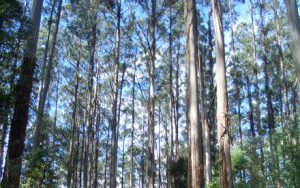The Mountain Ash forest ecosystem in the Central Highlands of Victoria is listed on the International Union for the Conservation of Nature’s (IUCN) Red List of Ecosystems and is categorised as critically endangered. This listing is based on an ecological assessment conducted in 2014. Source: Timberbiz
Since that study was published, VicForests has introduced and implemented a range of changes to its forest management systems to improve the protection of high conservation values.
Now a new paper responds to the listing and the assessment, and outlines VicForests’ current approach to harvesting. This position paper sets out VicForests’ response to stakeholder concerns about the listing of Mountain Ash forest in the Central Highlands of Victoria on the IUCN Red List of Ecosystems, with the category of “Critically Endangered” and at risk of collapsing.
The IUCN is a membership union composed of government and non-government organisations. Its mandate is to provide information and tools to international organisations to facilitate human progress, economic development and nature conservation.
The conservation of hollow-bearing trees across the landscape was a major focus of the study and the study had some limitations:
- Old growth is not the only predictor of hollow-bearing trees; they exist throughout the landscape and are often associated with riparian zones.
- The report indicates 20% of Mountain Ash forests are preserved from timber harvesting; whereas at least 70% of the forest is preserved from timber harvesting. Some 50% of the forest extent formally preserved and a further 20% is excluded from harvesting in accordance to the Code of Practice for Timber Production 2014 and other regulations.
The recruitment and development of hollow-bearing trees over time was not considered.
Significantly, over the past six years since that study was published, VicForests has introduced and implemented a range of changes to its forest management systems to improve the protection of high conservation values such as hollow-bearing trees.
This includes the use of formalised hollow-bearing tree surveys as part of all pre-harvest assessments and the use of variable retention harvesting and regeneration systems to maintain or enhance these values.
VicForests is continuing to strengthen these management systems through ongoing research, monitoring, and adaptive management, incorporating increased scope for stakeholder input.
Download VicForests’ response paper at www.vicforests.com.au/static/uploads/files/vicforests-paper-iucn-june-2020-wfmgzwmlronl.pdf






